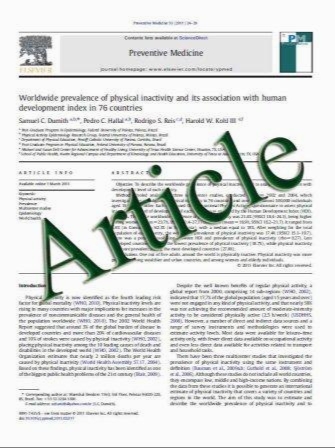The effect of major and mini thoracotomy in regaining shoulder range of motion (ROM)
- نوع فایل : کتاب
- زبان : انگلیسی
- مؤلف : A. S. Leo Rathinaraj & E. D. Kirubanand & K. V. Menon & M. T. Sreeja
- چاپ و سال / کشور: 2011
Description
Study design A review of 32 patients who had undergone thoracotomy for anterior spinal release for adolescent idiopathic scoliosis (AIS) was assessed for early shoulder active range of motion (AROM). Objective The purpose of this study is to determine whether mini thoracotomy incision is associated with relatively less or more shoulder restriction when compared with major (standard) thoracotomy. Summary of background data The correction of AIS through thoracotomy and spinal fusion is a popular method for correcting and stabilizing patients with major thoracic and thoracolumbar curves. The incision often requires the division of several major chest wall muscles including serratus anterior and latissimus dorsi. No studies have compared the ipsilateral shoulder range of motion (ROM) outcome following major and mini thoracotomy that involves splitting through the latissimus dorsi and serratus anterior muscles. Methods For this study, 32 patients with AIS treated surgically were examined over postoperative period. Sixteen patients underwent anterior spinal fusion through standard (major) thoracotomy and 16 patients through mini thoracotomy .The average patient age were 13.9 years (range, 11.5 to 17.2 years) for major and 14.5 years (range, 5 to 19 years) for mini thoracotomy. Shoulder ROM was measured preoperatively and immediate postoperative by two experienced physiotherapists. The contralateral shoulder served as the control limb. Fifteen patients underwent right thoracotomy and 17 patients underwent left thoracotomy, with ribs used for autograft. No patients had associated anomalies or previous upper extremity surgery. All the patients underwent postoperative shoulder mobilization and stretching protocol. Results Full active shoulder ROM was achieved in all patients. The data analysis clearly shows that there is no significant difference regarding their postoperative shoulder ROM. The difference shows that major thoracotomy group has a tendency to regain full AROM for longer duration when compared to the mini thoracotomy group, although this did not reach significance both statistically and clinically with p value of 0.057. Conclusion Patients undergoing spinal fusion through open thoracotomy (major or mini) can expect to regain full ipsilateral shoulder active ROM within 5th postoperative day. Many a time patients tend to “protect” their movements due to pain that may lead to reduced shoulder range and/or weakness of the muscles in the shoulder girdle. Adhering to a structured postoperative mobility and stretching protocol is recommended to optimize ROM outcome.
Eur Orthop Traumatol (2011) 1:163–167 DOI 10.1007/s12570-011-0034-1 Received: 19 December 2009 / Accepted: 1 January 2011 / Published online: 27 January 2011


